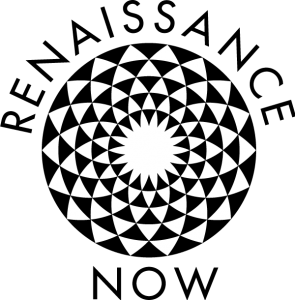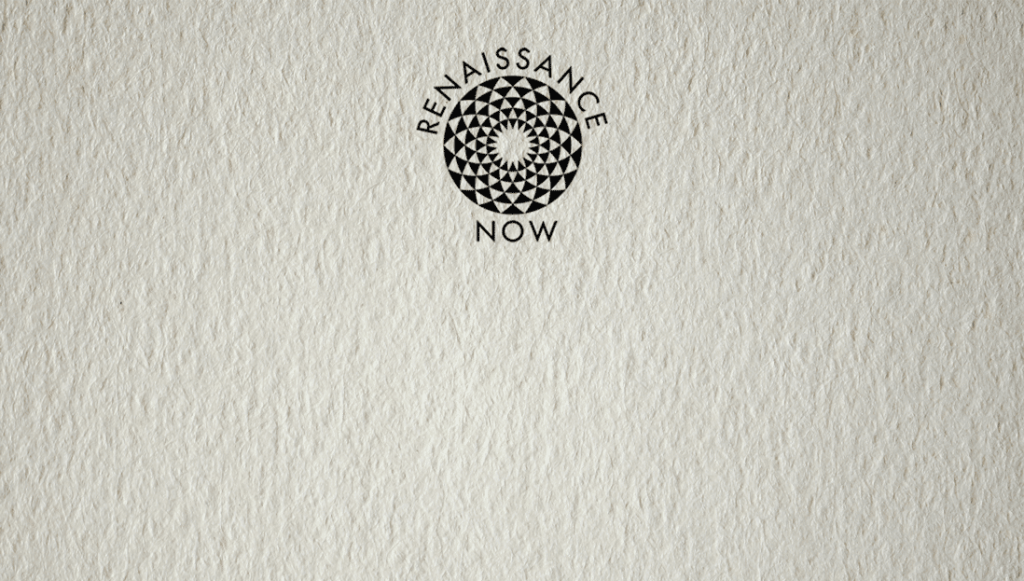Renaissance is a name for a series of dynamic periods when culture and commerce have collaborated to stimulate the urgent changes that each moment demanded. The demand is again palpable today. Responsible scholars, scientists, and political leaders feel the urgency to develop innovative collaborations that advance beyond our existing paradigms of progress that have driven modernity toward the brink of survival for the planet and for its creatures. The United Nations Sustainable Development Goals articulate this mandate for ethical and practical change, but they fall short of igniting the necessary innovation. Already, however, distinguished academics and artists, scientists, and engineers dedicate their individual work to reviving a civic mission beyond institutions of academics and art. We are called on to promote a shared platform of engagement, to make it visible and viable for many more potential contributors. This will launch a collective consciousness that inaugurates a new and urgent Renaissance Now.
The groundswell of intellectual and creative activism would refresh the daring spirit of curiosity and collaboration that characterized Europe’s 15th century Renaissance 1.0. After the great plague of Europe’s Middle Ages, many scholars abandoned the cloisters and engaged together in rebuilding their world. This human-centered approach to learning and doing was both bold and humble. It dared to depart from familiar enclaves of specialists and it acknowledged dependence on other specialists. A re-birth of collective life would require collaborations among people from vastly different fields: political leaders, bankers, artists, medical doctors, architects, and entire societies of engaged citizens. The combination of boldness and humility brokered alliances that took risks and demonstrated that progress is possible by exploring new models of making. When the Medicis decided to fund Brunelleschi’s ambitious Duomo for the Cathedral of Florence — though other potential patrons held back because they were sure the unsupported structure would fall down — the daring investors gained credibility as financial and political leaders. They had bet on an artist and advanced very practical agendas that included innovations in engineering.Renaissance 2.0 was Europe’s 18th century Enlightenment, a burst of intellectual energy that dared to look at the world afresh. With a push from the natural sciences in the 17th century that had combined modesty about what we know and the self-confidence to know more, philosophy learned to doubt received paradigms and to discover dynamic processes of knowing and of sociability. Newly observed facts refused to fit into received paradigms that had lasted since the times of Plato and Galen. The Century boldly switched on the lights in order to see clearly and to think freely, but almost always in the register of rational self-interest. One lesson learned was that the apparently unassailable faculty of Reason could be pitiless and single-minded, as in the Terror of the French Revolution and the brutal suppression of colonial slave revolts. Freedom was unleashed as an ideal, however, and conquered people would appropriate it as a promise. Modernity required scientific Reason and free, disinterested Judgment. Together, these newly revived human faculties would forge a culture that dared to abandon received and restrictive traditions in order to launch experiments that included democracy. When prototypes of the new State appeared in the Americas, starting with Haiti’s Revolution, Europe saw the limits of its own “universality.”
An explosive outcome of the development of human societies was the Industrial Revolution of the 19th century, as new machines, new power sources, and new ways of organizing work made existing industries more productive and efficient. The capitalist model of growth has increasingly changed the landscapes of the planet, the trends of exploitation, limitless consumption, and waste it triggered resulting in the multiple sustainability crises of today. While this revolution may not deserve to be celebrated in retrospect, it is vital for a full account and understanding of our current condition.
The 20th century World Wars generated a Renaissance 3.0, as military goals drove the development of scientific engineering in everything from mobility to synthetic materials and artificial food. Literature explored new existential approaches to reflecting on the tragedy of human limitations that nevertheless do not absolve our obligations to the damaged human condition. This lull in Europe’s self-confidence was the moment of India’s independence and Africa’s national liberations. Engagement was the preferred and messy keyword, not the blinding mirage of enlightenment. Medicine invented psychoanalytic pathways to repair the ravages of trauma and to mourn a modernity based on reason that was already lost. That philosophy took a turn toward political theory in order to detour from universal principles reveals the general tremor of anxiety among thinkers and activists. They sought practical processes rather than long-lasting ideas.
Today, Renaissance Now must be a planetary and cosmopolitan movement that will put the human experience in post-colonial perspective. This wider lens captures our conditions and demands of Human Rights beyond self-interest and national single-mindedness. The moment, again plagued by pandemic, identifies opportunities and obligations to give purpose to frustrated scholars, scientists, artists, and engineers. It is time to turn frustration into fuel for activism. Worldwide, creative minds construct and propose projects to address challenges that affect us all: public health, racial and gender equity, safety, environmental degradation, immigration. While writers lay bare the wounds of racial, gendered, and linguistically situated selves, visual and performing artists take to the streets to actively occupy cities and to fashion complex social fabrics. Simultaneously, science is shifting gear toward computation, which is reframing disciplines as diverse as engineering, physics, chemistry, finance, biology, and data analysis. Computation now constitutes a third pillar of science, alongside scientific theory, and experiment. But its innovations will dead-end if they stop at writing and debugging “code.” The ever-increasing complexity of software solutions makes this familiar paradigm already outdated and untenable.
We invite you to forge collaborations among the sciences and the humanities to address “wicked problems” — by definition impossible to resolve from any one discipline, or any group to the exclusion of others — which counts on various sources of traditional and new knowledge. Renaissance Now requires combined and complementary efforts that put together the rigor of scientific research with the creative pleasures of sociability. Without this combination, what humanly defensible innovations can we expect?
Editorial Board
José Falconi
University of Connecticut.
Doris Sommer
Harvard University.
Tracey Strange
Art Life Laboratory.
You Are Here
- ARCHIVE
- EVENTS
- VIEWPOINTS
- INTERVENTIONS
- PARTNERS
- PODCAST



